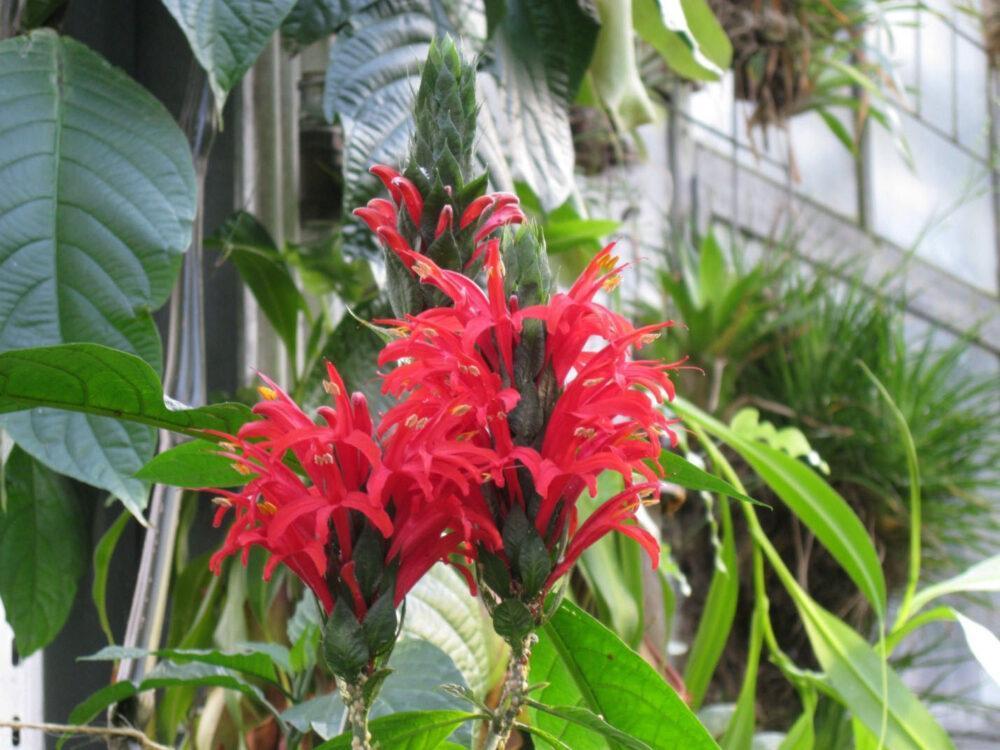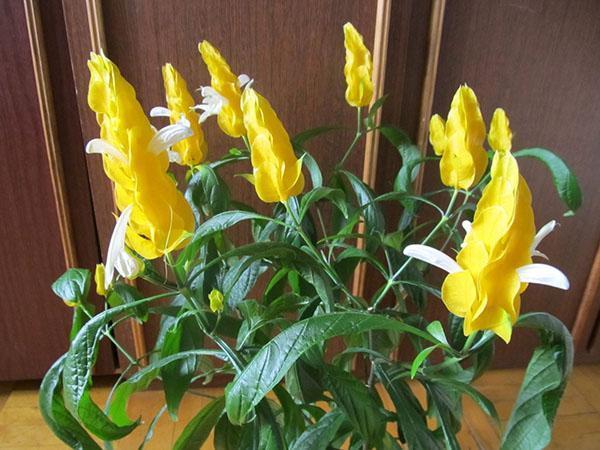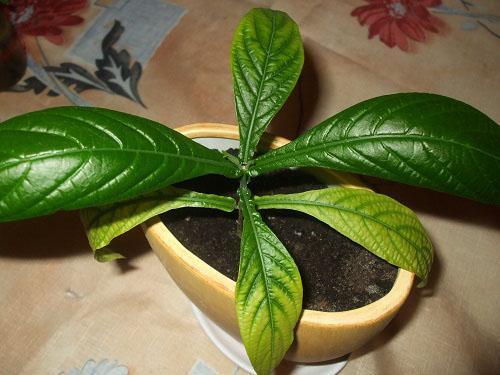Proper care of pachystachis at home
 In order to grow healthy and lushly blooming pachystachis, home care for this plant must follow certain rules. It is important to choose the right soil and utensils for growing, maintain the required temperature and humidity, and regularly water and feed the flower. Then he will be able to show himself in all his glory.
In order to grow healthy and lushly blooming pachystachis, home care for this plant must follow certain rules. It is important to choose the right soil and utensils for growing, maintain the required temperature and humidity, and regularly water and feed the flower. Then he will be able to show himself in all his glory.
Creating a supportive environment

- Maintaining air temperature. In spring and summer, it should not fall below 18–20 ° C. If the thermometer rises above this mark, it is important to increase the humidity in the room to prevent the leaves from drying out. In autumn and winter, the optimum temperature for pachystachis is 15-19 ° C. In cooler air, the leaves of this thermophilic plant begin to fall off, and in the spring, with the onset of the growing season, it will need a long recovery period for the bush to gain volume again.

- Cool drafts are a big threat to pachystachis. This must be taken into account when choosing a place for a plant. In the cold season, it is better to remove it from the window sill and place it at some distance from the window.
- Lighting for pachistachis should be moderate. An exotic flower should receive enough sun, but its direct rays leave unsightly burns on the leaves. The ideal choice would be a window on the east or west side of the house. If pachistachis is grown on the south window, then he needs to create artificial shading.
- This tropical plant is accustomed to high humidity - from 60%. When growing in a room with dry air, special measures must be taken: place a container of water next to the pot, hang a wet towel on the battery, or use a special device - a humidifier. In winter, it is better to move pachystachis away from heating appliances.
The creation of favorable conditions is the basis for the active development and flowering of pachistachis. Its requirements for the environment are not much different from the requirements of most houseplants, "migrated" on the windowsill from tropical forests.
Planting pachistachis and fertilizing
 The size of the pot for a plant should depend on the size of the root system: it is better that the volume exceeds them by 3-4 cm, because pachistachis loves free space. It is recommended to give preference to wide dishes. At the bottom of the pot, a drainage layer of less than 2 cm is required. This will ensure sufficient air flow to the roots and prevent stagnation of water at the bottom, which leads to rot.
The size of the pot for a plant should depend on the size of the root system: it is better that the volume exceeds them by 3-4 cm, because pachistachis loves free space. It is recommended to give preference to wide dishes. At the bottom of the pot, a drainage layer of less than 2 cm is required. This will ensure sufficient air flow to the roots and prevent stagnation of water at the bottom, which leads to rot.
For drainage, you can use small stones, necessarily disinfected, or expanded clay purchased in a store.
Top dressing and soil selection for pachystachis also play an important role in plant development. It prefers fertile soil with low acidity and good aeration, so the soil should be loose. The easiest way to buy a universal mixture for flowering indoor plants is to add coarse sand or vermiculite to it in a 4: 1 ratio.
You can prepare the soil yourself by mixing:
- leafy ground;
- sod land;
- peat;
- sand;
- humus.
All components are taken in equal parts.
From April to the beginning of autumn, pachistachis actively develops and blooms, so it needs regular feeding. They are made 1-2 times a month. In order for the plant to receive all the necessary substances, you can alternate the introduction of organic matter (for example, mullein infusion) and complex mineral fertilizersth for flowering species. In autumn and winter, there is no need for feeding.
Regular care
 In caring for pachistachis at home, regular watering plays a key role. This plant loves moisture, so in spring and summer, the soil should not be allowed to dry out. It needs to be watered as soon as the top layer of the earth dries up. In winter, watering is reduced to 2 times a week, but you always need to focus on the condition of the soil and the flower itself. Lack of moisture greatly harms the pachystachis, and can lead to its death.
In caring for pachistachis at home, regular watering plays a key role. This plant loves moisture, so in spring and summer, the soil should not be allowed to dry out. It needs to be watered as soon as the top layer of the earth dries up. In winter, watering is reduced to 2 times a week, but you always need to focus on the condition of the soil and the flower itself. Lack of moisture greatly harms the pachystachis, and can lead to its death.
On hot days and in dry indoor air, the plant responds well to regular spraying from a spray bottle. It is better to produce them in the morning and in the evening, as long as the sun's rays do not fall on the pachistachis.
In order for the plant to grow into a lush bush with numerous bright inflorescences, caring for pachystachis at home must necessarily include regular pruning and pinching of young shoots. If you do not do this, you will get an almost naked, unbranched stem with sparse leaves, and such a specimen will not look decorative.
The best time for crown formation is early spring, when vigorous stem growth begins. Young shoots are pinched at the apex above the leaf axils, from which new shoots will appear later; and the old ones are cut with sharp garden shears. This procedure should be started when the height of the pachistachis reaches 20 cm.
 During the growing season, crown formation can be performed up to three times. Pulling the stems in height will slow down, but at the same time the number of shoots will increase.
During the growing season, crown formation can be performed up to three times. Pulling the stems in height will slow down, but at the same time the number of shoots will increase.
Adult specimens should be pruned once a year, in March.
The cut off parts of the shoots are used for plant propagation. To do this, they are rooted in water or soil, pre-treated with a growth stimulant. The roots will appear in about 10-14 days, and then the cuttings can be transplanted into a small pot or plastic cup.
If you properly care for pachistachis, then flowering occurs from early spring to mid-autumn. Sometimes, under favorable conditions, it continues all year round. To do this, you need to create favorable conditions for the plant indoors and do not forget about regular maintenance.